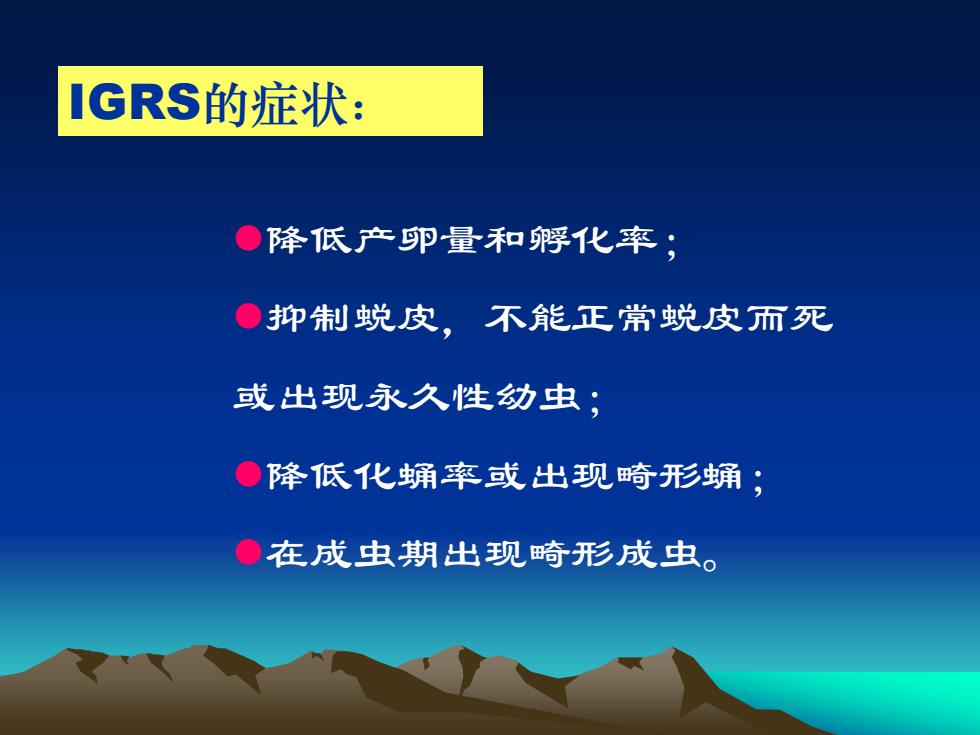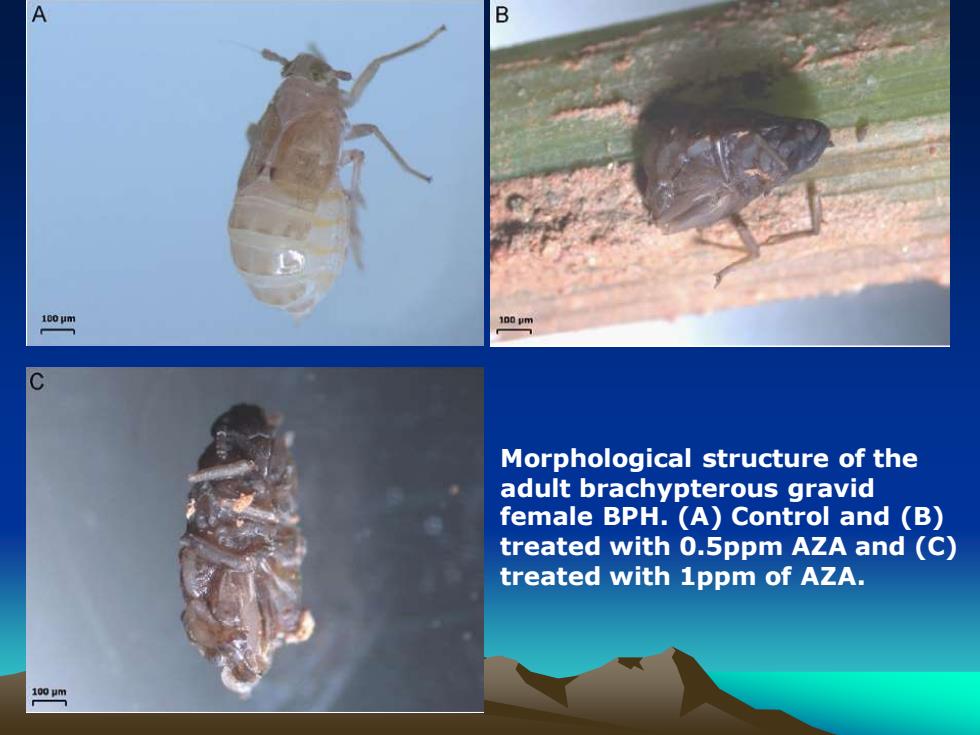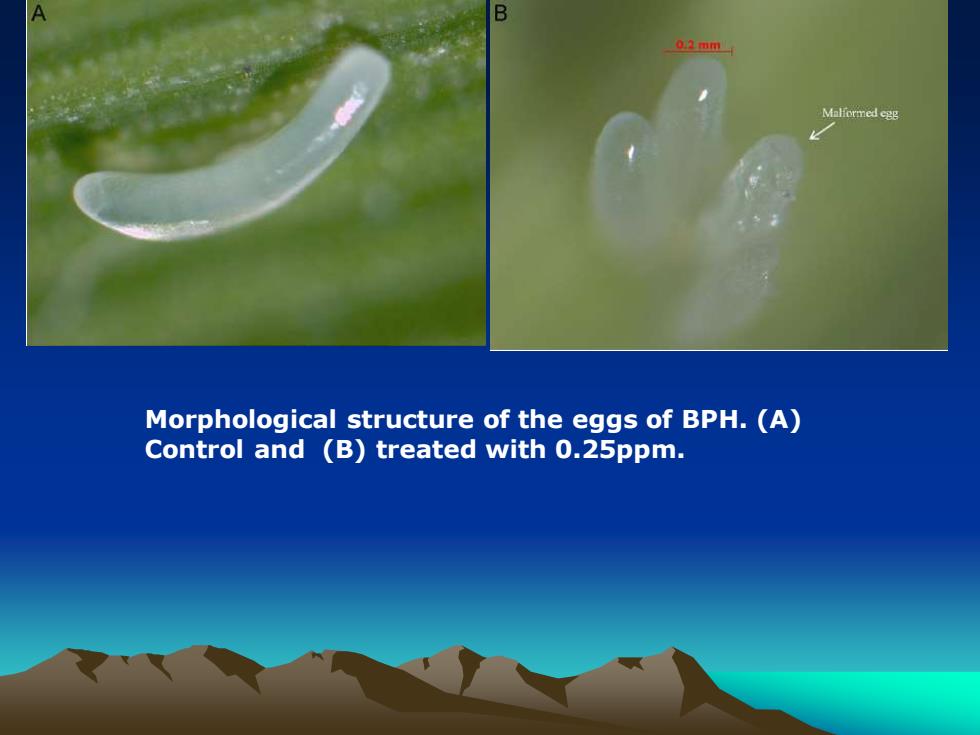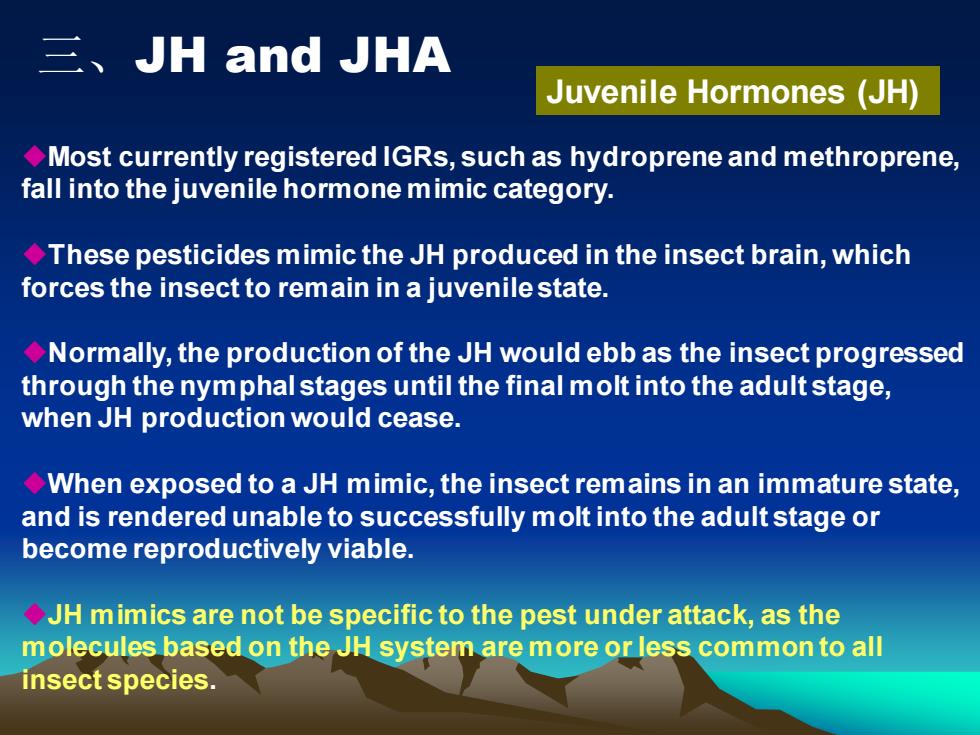
IGRS的症状:降低产卵量和孵化率:抑制蜕皮,不能正常蜕皮而死或出现永久性幼虫;降低化蛹率或出现畸形蛹:在成虫期出现畸形成虫
⚫降低产卵量和孵化率; ⚫抑制蜕皮,不能正常蜕皮而死 或出现永久性幼虫; ⚫降低化蛹率或出现畸形蛹; ⚫在成虫期出现畸形成虫。 IGRS的症状:

100umMorphological structure of theadult brachypterous gravidfemaleBPH.(A)Controland(B)treatedwith0.5ppmAZAand(C)treated with 1ppm of AzA.100u
Morphological structure of the adult brachypterous gravid female BPH. (A) Control and (B) treated with 0.5ppm AZA and (C) treated with 1ppm of AZA

0.2mmMalformedeggMorphological structure of the eggs of BPH.(A)Control and (B)treated with 0.25ppm
Morphological structure of the eggs of BPH. (A) Control and (B) treated with 0.25ppm

三、JHandJHAJuvenile Hormones (JH)MostcurrentlyregisteredIGRs,suchashydropreneandmethroprenefall into the juvenile hormone mimic categoryThesepesticidesmimictheJHproducedintheinsectbrain,whichforcesthe insectto remain ina juvenilestate.Normally,theproductionoftheJHwouldebbastheinsectprogressedthroughthenymphalstagesuntil thefinalmolt intotheadultstage,whenJHproductionwouldcease.WhenexposedtoaJHmimic,theinsectremainsinanimmaturestateandisrenderedunableto successfullymolt intotheadultstageorbecomereproductivelyviableJHmimicsarenotbespecifictothepestunderattack,asthemoleculesbasedontheJH systemaremoreorlesscommontoallinsectspecies
◆Most currently registered IGRs, such as hydroprene and methroprene, fall into the juvenile hormone mimic category. ◆These pesticides mimic the JH produced in the insect brain, which forces the insect to remain in a juvenile state. ◆Normally, the production of the JH would ebb as the insect progressed through the nymphal stages until the final molt into the adult stage, when JH production would cease. ◆When exposed to a JH mimic, the insect remains in an immature state, and is rendered unable to successfully molt into the adult stage or become reproductively viable. ◆JH mimics are not be specific to the pest under attack, as the molecules based on the JH system are more or less common to all insect species. Juvenile Hormones (JH) 三、JH and JHA

代表性品种Juvenile Hormone IllMethoprene (>30,000 mg/kg)福Fenoxycarb (16,800 mg/kg)
代表性品种